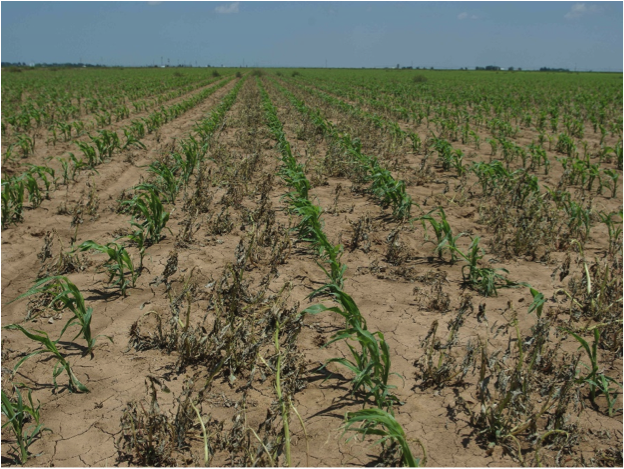Statewide
Huskie herbicide (active ingredients: pyrasulfotole + two formulations of bromoxynil) from Bayer Crop Science has generated a lot of interest due to lower potential injury to grain sorghum compared to dicamba and 2,4-D products, which also have volatility drift issues to nearby cotton. Though leave burn is expected, sorghum grows out of it with little apparent long-term effects.
We first reviewed Huskie for “Sorghum Tips” April 2012 (see http://texassorghum.org/sorghum-tips/page/4). Huskie use continued in 2013 with largely good results in numerous sorghum fields across Texas. Reports of good control of Huskie, especially on pigweed species including glyphosate-resistant Palmer ameranth, are common especially when applied to smaller weeds (Fig. 1).
Fig. 1. – Huskie control of pigweed species in grain sorghum seven days after application, Nazareth, TX, 2012 (1 pint/A Huskie + 1 pint/A atrazine + AMS). Photo courtesy Russ Perkins, Bayer Crop Science, Lubbock, TX.
There are new label changes for the 2014 cropping season:
- The original application window for Huskie has been expanded from 3-leaf stage to 12” tall to now include sprays to 30” tall grain sorghum, or initial flag leaf emergence, whichever comes first. Three potential caveats must be noted about the expanded window of application: 1) label guidelines still recommend weed size ≤ 4” in size, 2) Huskie applications after 12” tall must forego atrazine as a preferred tank mix (ATZ only labeled to 12” tall), and especially 3) the idea that you can save Huskie until later could deceive producers into making mistakes in regard to all-important timely weed control.
- The label now recommends that you do include AMS “under challenging conditions” (hot, dry) and “for optimal weed control in grain sorghum in arid environments, Huskie herbicide + 1 lb./A AMS can also be combined with 0.25% v/v NIS or 0.5% v/v HSOC (high-surfactant oil concentrate).”
AgriLife weed scientists in the High Plains on sandier soils continue to address the question about rotation back to cotton, which the label says “field bioassay.” For the first time in 2013 some apparent low levels of injury were observed in cotton and peanut after 2012 Huskie use in grain sorghum. This is being investigated further.
Bayer staff note that leaf burn appears to be reduced by the inclusion of iron (most likely iron chelate; less expensive iron sulfate has not been tested) in the spray solution.
Finally: Though Huskie appears to be a good choice for POST weed control in grain sorghum, I assert that your pre-plant/pre-emerge weed control strategy is still your most important weed control decision for grain sorghum. The expansion of the label application window may delude some producers into further relying on Huskie to fix their weed issues.
For an AgriLife Extension summary of Huskie herbicide, see http://lubbock.tamu.edu/files/2014/03/Huskie-Grain-Sorghum-Summ-Mar2014-Trostle-PDF.pdf









